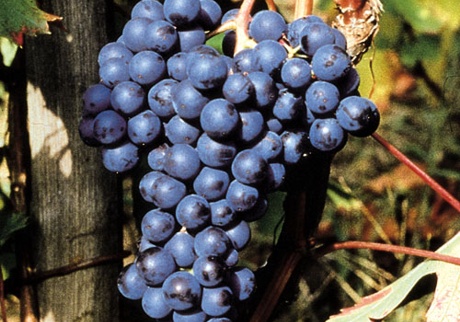
Name
Dolcetto of Dogliani
Seal of quality
Guarantee of Origin.
A.O.C. – D.M. 6th July 2006
Description
A wine resolute in its jovial and fragrant characteristics: ruby and violet colours that inflame the glass, a strong bouquet of ripe fruit, for the most part marasca cherry and plum, a dry flavour despite its name and interpretative sensations.
It stems from the pure dolcetto vine and has a minimum alcoholic content of 11.5% vol.
Area of production
Dolcetto di Dogliani can be produced in 9 communes in the Langa area, around Dogliani, and precisely Bastis, Belvedere, Langhe, Clavesana, Cigliè, Dogliani, Farigliano, Monchiero, Roccacigliè and a part of the area of Roddino and Somano.
History
The link between Dolcetto and Dogliani is as old as the earth and with the passing of time is still the most established. An irreproachable historical reference remains the mention found in the Statutes of the commune of Dogliani, that dates back to 1593 and that introduces a precise injunction regarding the beginning of grape harvest. In actual fact, this passage of the communal Statutes cautions:
Niuno ardischi al di qua della festa di San Matteo vendemmiare le uve et se qualcheduno per necessità od altra causa dovrà vendermiar qualche Dozzetti o altre uve serà tenuto prender licenza dal deputato“.
“Be there no one daring to harvest the grapes if not for this festivity of Saint Matthew’s, and should anyone either for need or other reasons require to harvest some ‘Dozzetti’ or other grapes, these will be obliged to obtain permission from the deputy”.
The name Dogliano can also boast a glorious origin, as an etymological interpretation takes this word from “Dolium Iani”, which means that the wine produced on these hills was, in ancient times, appreciated by Janus, the god and guardian of passageways and borders.
The growing of this vine in Dogliani is an ancient ritual that can be seen in the strength with which wine-growers on these hills have instilled this ritual in their vineyards, to which they dedicate the hillsides and best exposures: here and in the neighbouring towns that belong to the area of origin of this wine, the vineyards are mainly meant for Dolcetto; only if there is enough space, then a little attention can be given also to other varieties, still complementary.
With this special attachment to Dolcetto, we can now understand what pushed wine-growers in Dogliani and its surrounding areas in the 60s to insist on obtaining a specific Status for their production, without agreeing on certain proposals that wanted all the Dolcetto produced on the Langhe hills under one only AOC status.
Therefore, on 26 th June 1974, a decree of the President of the Republic granted this wine the right to hold the Designation of Origin status. It was only right for a “wine of the President”, seeing how a President like Luigi Einaudi always showed his attachment to this wine.
In 1994, the current “Consorzio per la Tutela Barolo , Barbaresco, Alba Langhe and Roero” was founded as a point of reference for wine-makers in the Langa and Roero areas who have identified in this structure the most suitable means to face together and authoritatively problems relating to the development and organisation of their reality and sector as a whole.